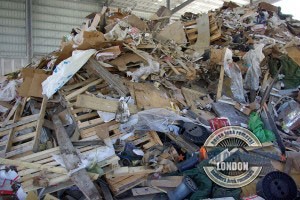Effective recycling depends on effective waste sorting. In turn effective waste sorting relies on proper rubbish removal methods. Rubbish removal though is just the tip of the iceberg so to say. New examples of waste sorting technology are entering the industry every year and raising the effectiveness of recycling. In the European Union in particular, waste sorting on a household level has become hugely important. At the moment, EU member states choose which type of waste to sort out, and how to go about separating it from the general waste stream. The trend will be to separate as much useful waste as possible through application of the most efficient methods and technologies.
Sorting of useful waste and separating it from general waste stream is also important as it reduces the amount of rubbish ending up in landfills. In the EU, member states are bounded by intergovernmental regulations which cover both recycling and environmental protection thus making waste sorting all the more important.
In two thousand eight, the EU parliament decided that each member country will set and adhere to its own recycling targets. However, these rules are not entirely liberal and bound member states with certain minimums on recycling rates. At the moment each country must aim to recycle at least fifty percent of all household waste, and at least seventy percent of construction waste by the year two thousand twenty. This means that efficiency of waste sorting practices in different EU countries is paramount if these targets are to be met.
Generally, waste management and recycling operators use one or more of five major sorting technologies.
 Trommel separators/Drum screens – these machines sort waste according to its particle size. The rotating drums used in the process have their walls perforated. As it rotates the drum tumbles around bits and pieces of waste, the smaller pieces (depending on perforation size) fall out during rotation. The larger bits remain inside – waste sorted. There are different types and size drums for different kinds of waste.
Trommel separators/Drum screens – these machines sort waste according to its particle size. The rotating drums used in the process have their walls perforated. As it rotates the drum tumbles around bits and pieces of waste, the smaller pieces (depending on perforation size) fall out during rotation. The larger bits remain inside – waste sorted. There are different types and size drums for different kinds of waste.
Eddy current separator – this machine is solely used for separation of different kinds of metals from metal waste stream. Metal scrap is separated through application of a so called ‘eddy current’ – a process in which a conductor is exposed to variable magnetic field. Basically, this is an electromagnetic method to separate ferrous from non-ferrous metals.
Induction sorting – this machine separates metal scrap from general waste stream. It uses special sensors fitted on the underside of a conveyor belt. As the waste rolls along the conveyor, the sensors ‘catch’ different types of metal and send signals to a system of air jets which then separate the given piece of metal from the rest of the waste stream.
Near Infrared Sensors (NIRs) – these sensors emit special wavelength light which is then reflected in different ways by different types of waste. The sensors then ‘see’ the particular type of reflection and sort waste accordingly.
X-ray separation – these separators are able to radiate waste and then make a difference between waste materials depending on their density.
